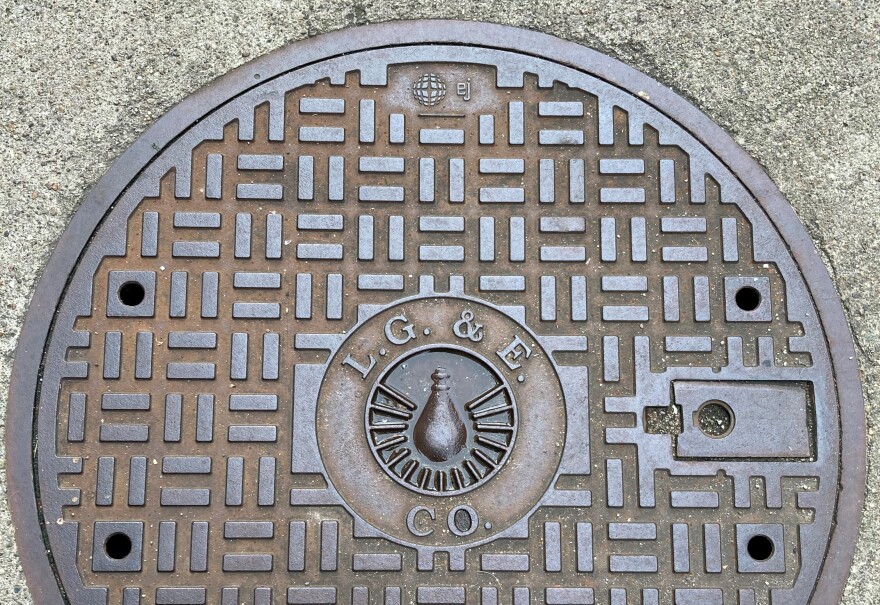Louisville Gas and Electric and Kentucky Utilities plan to burn fossil fuels after 2050 and still meet net-zero commitments using unproven carbon capture technologies that their own official described as “aspirational,” according to testimony from company officials.
Climate scientists say 2050 is the deadline for humanity to reach net-zero carbon emissions in order to preserve a habitable planet.
Officials with LG&E, KU and their parent company PPL Electric Utilities Corporation say they are committed to achieving net-zero carbon emissions by 2050 with interim goals to reduce carbon emissions by 70% of 2010 levels by 2035 and 80% by 2040.
Utilities across the country are making similar commitments. This is important because greenhouse gases from burning fossil fuels like coal, oil and natural gas are warming the planet. United Nations Secretary António Guterres has warned the world has to act this decade to avoid climate devastation and “collective suicide.”
“Greenhouse gas concentrations, sea level rise and ocean heat have broken new records. Half of humanity is in the danger zone from floods, extreme storms and wildfires. No nation is immune,” Guterres said.
To avoid this fate, climate experts say we need to limit warming to 1.5 degrees Celsius. That’s all laid out in the Paris Climate Accords, and the U.S. is a part of that agreement. To meet its goals, experts say people need to cut carbon emissions 45% from 2010 levels by 2030 and reach net-zero by 2050.
LG&E's net-zero plans
But when Kentucky utility regulators asked LG&E’s Chief of Operations Lonnie Bellar about why utilities selected 2050 during a hearing in mid-July, Bellar did not address climate change.
“2050 is a date that’s discussed widely in industry. Now I don’t know the origin of that, but we seemed to have settled on 2050 as being a key date,” Bellar told regulators with the Public Service Commission.
Net-zero means that by 2050, greenhouse gas emissions need to be as close to zero as possible with any remaining emissions that would either need to be offset naturally or using technology like carbon capture.
LG&E has promised that it will not burn coal past 2050 unless it can offset those emissions in some other way. But as of now, Bellar says LG&E does plan to burn fossil fuels like natural gas, and possibly coal, after 2050.
“I’m not aware of any decision that we’re contemplating that would include not burning any fossil fuels past 2050. And of course I’m saying we could burn them, they just need to be abated,” he said.
Offsetting emissions
An attorney at the hearing asked LG&E’s director of environmental & federal regulatory compliance, Philip Imber, how the utility plans to offset these emissions after 2050 to achieve net-zero.
“That is yet to be determined. That is an aspirational goal. The technologies are not defined at this point,” Imber said.
LG&E has partnered with the University of Kentucky to research carbon capture for the last 15 years. But LG&E told WFPL News it has pivoted away from coal-focused carbon capture research and is instead focusing on eliminating carbon emissions from natural gas plants.
It’s also partnering with UK and the Electric Power Research Institute and their Low Carbon Research Institute to build direct air capture technology that would capture carbon and produce hydrogen.
Imber told utility regulators it’s unclear whether this technology will work, but he has a backup plan.
“Technologies may not be in place for net-zero, but that said we could plant trees, things like that,” he said.
In June, LG&E requested proposals from energy providers to begin adding capacity to the grid in 2025 with an eye toward a clean energy future, but they’re also considering plans to build their own 660 mw natural gas plants in Jefferson and Mercer counties.
When WFPL notified LG&E about this story, a utility spokesperson responded with this statement in part:
“As part of our clean energy strategy, LG&E and KU and our parent company PPL, are committed to achieving net-zero carbon emissions by 2050 and no longer burning coal by 2050 unless it can be mitigated with carbon dioxide removal technologies. Our commitment is backed by the actions that we are and will continue to take to support a low-carbon energy system that is affordable and reliable and provides the time needed for technology to advance.
As we work to realize our goal, we understand there may be any number of technology developments, regulatory mandates or other circumstances that will evolve and could impact our generation fleet and, more specifically, the economic retirement of our coal-fired generation. We view our path to net-zero emissions on a continuum, with a primary focus on eliminating our gross emissions, leveraging technology to remove emissions where they cannot be eliminated due to cost or reliability constraints, and finally, considering carbon offsets for any remaining emissions as the least-preferred option."
Correction: A previous version of this story incorrectly stated an interim target for LG&E's carbon reductions. LG&E plans to reduce carbon emissions 80% of 2010 levels by 2040.


